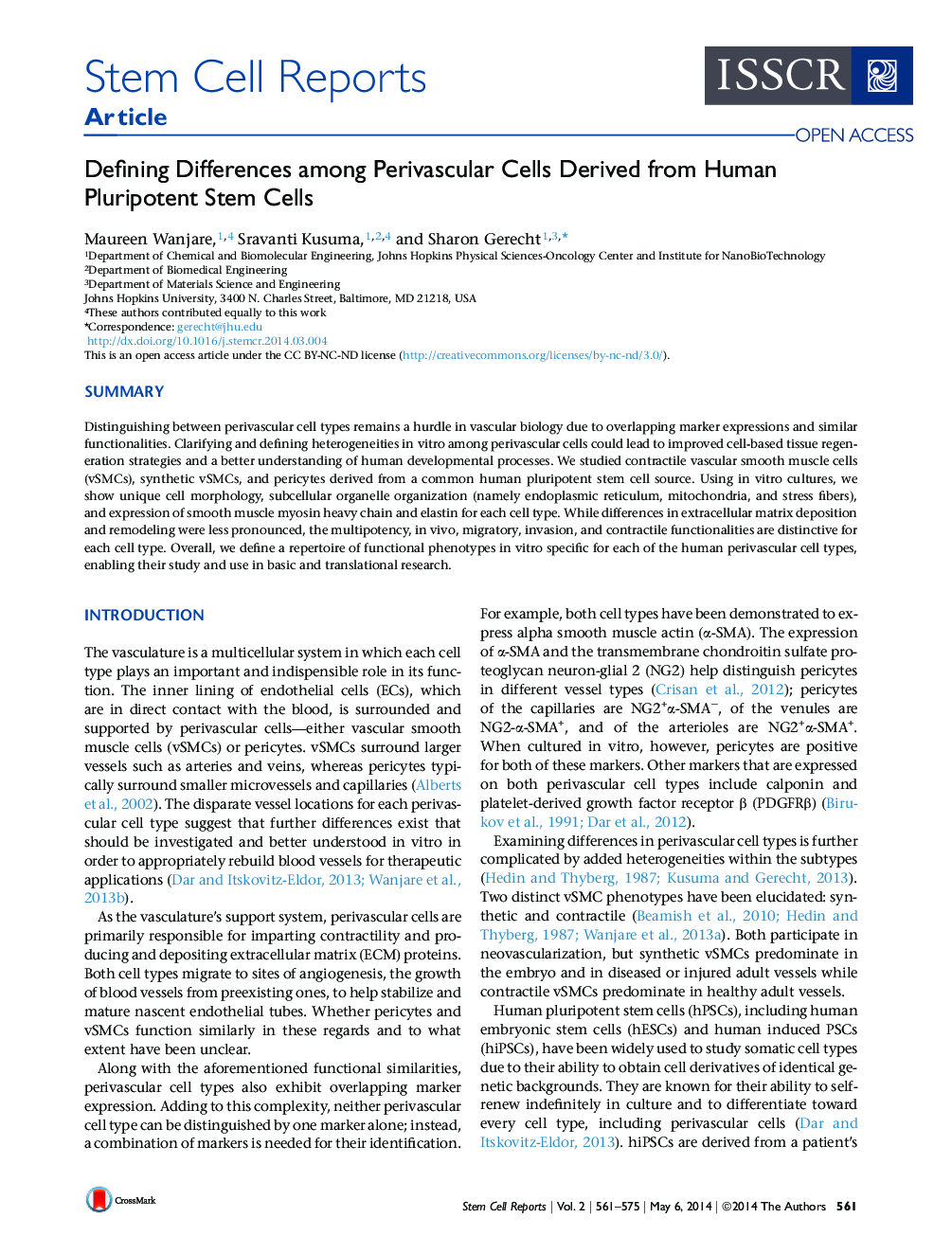| Article ID | Journal | Published Year | Pages | File Type |
|---|---|---|---|---|
| 2093356 | Stem Cell Reports | 2014 | 15 Pages |
•Contractile and synthetic vSMCs and pericytes were derived from a common hiPSC line•Morphology and organelle organization differ among the perivascular derivatives•SMMHC and elastin specify the mature contractile vSMC phenotype•Migration, invasion, and contractility are unique for each perivascular cell type.
SummaryDistinguishing between perivascular cell types remains a hurdle in vascular biology due to overlapping marker expressions and similar functionalities. Clarifying and defining heterogeneities in vitro among perivascular cells could lead to improved cell-based tissue regeneration strategies and a better understanding of human developmental processes. We studied contractile vascular smooth muscle cells (vSMCs), synthetic vSMCs, and pericytes derived from a common human pluripotent stem cell source. Using in vitro cultures, we show unique cell morphology, subcellular organelle organization (namely endoplasmic reticulum, mitochondria, and stress fibers), and expression of smooth muscle myosin heavy chain and elastin for each cell type. While differences in extracellular matrix deposition and remodeling were less pronounced, the multipotency, in vivo, migratory, invasion, and contractile functionalities are distinctive for each cell type. Overall, we define a repertoire of functional phenotypes in vitro specific for each of the human perivascular cell types, enabling their study and use in basic and translational research.
